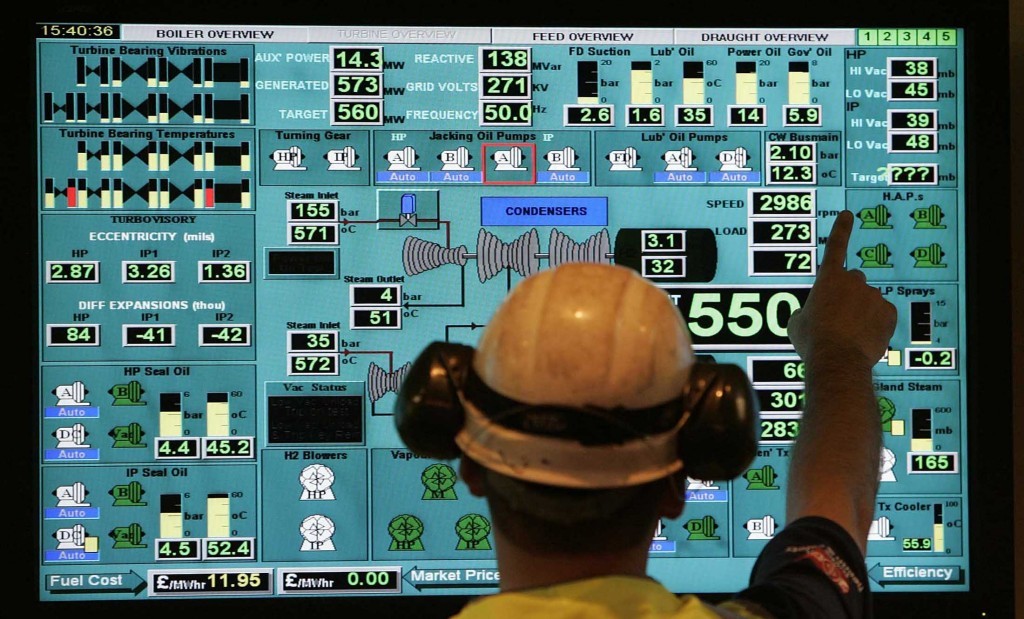
Imagine an uninformed stranger arriving in Scotland and examining what passes for an energy policy. What conclusions would be reached about the self-contradictory, self-defeating chaos that has been achieved so far?
On the one hand, we have a Scottish government which has made massive virtue out of a low-carbon energy policy, targeting a generation equivalent to 100% renewables.
On the other, we have one of Europe’s most polluting power stations scheduled for near-imminent closure.
Our passing stranger might reach one of two conclusions, or possibly both. First, the closure of Longannet is entirely consistent with the stated objectives of the current Holyrood administration.
And/or the way to avert closure should have been for Longannet’s owners to make the investment required to reduce emissions and thereby protract its lifespan.
But this is Scotland 2015 where having one’s cake and eating it is the established right of the Scottish government.
So instead of celebrating Longannet’s likely closure by next March with their friends the Greens, who are openly “delighted”, they are professing outrage and trying to make political capital without regard to their own role.
Instead of calling the Spanish owners of Scottish Power, Iberdrola, to account, they are happy to let them off the hook altogether by colluding in the fiction that Longannet is threatened because of transmission charges which the station has hitherto managed to live with since it first opened in 1973.
The first priority in Scotland is not now to save jobs or hold multinational companies to account. It is to find an argument, however tenuous, to “blame Whitehall” and turn everything into a Scotland v England argument.
The passing stranger would quickly conclude that this really should be a Scotland v Iberdrola argument and wonder why that is going almost entirely by default.
Why are the broken promises made by Iberdrola about investment in Scotland not being delivered?
Remember the joint announcement in advance of the last Holyrood elections – ridiculed in this column at the time – by Alex Salmond and his pal the president of Iberdrola, that the company would invest £2.5billion in Scotland by the end of 2012?
Political gold-dust for Salmond but did anyone go back and check on how much – or how little of it – ever happened?
For example, what about real commitment to carbon capture technology R&D, which would have brought down the station’s tax bill?
Bear in mind, the £1billion flagship CCS project for Longannet was killed stone dead in 2011 by ScottishPower.
The bit that certainly did happen was the quid pro quo from the Scottish government which has been total compliance with the interests of Ibiderola/Scottish Power including failure to leverage the investment which would have kept Longannet open until 2020.
Scottish Power hung its closure announcement on the back of a decision by National Grid to award the voltage support contract to SSE’s gas-powered plant at Peterhead.
Strangely, we do not hear the same alibis from Peterhead about the supposedly crippling impact of transmission charges.
A voltage support contract is necessary because of Scotland’s concentration, to the exclusion of all else, on renewables. But so far, renewables has turned out to be virtually synonymous with onshore wind which is a highly uncertain source of energy security. It is going to stay like that for some time to come.
It remains to be seen if even the few offshore windfarms which have succeeded in the Contract for Difference auctions can put investment together on the basis of the very low price they bid. So far, the risk profile of these projects, beyond very shallow waters, has made investors wary.
So where does Scotland’s energy policy now stand?
Fortunately, we have hydro power bequeathed from previous generations. We have thousands of onshore wind turbines, barely a single one of them built in Scotland (which was also supposed to be part of the deal, not least with Scottish Power). We have next to nothing from offshore wind and nothing at all from wave and tidal.
At the same time, both Hunterston B and Torness nuclear stations are living on time borrowed from the Nuclear Inspectorate. Ironically, the anti-nuclear Scottish government is now hugely dependent on two very old nuclear power stations having their lifespans extended to 2030 in order to keep our lights on.
Cockenzie no more, Longannet perhaps soon to be no more . . . Within the space of a few years, Scotland is being turned from net exporter of electricity into massive importer with thousands of good quality jobs lost along the way.
The estimate at Longannet alone is of 1,000 job losses in the local economy which is why a campaign focused squarely on the role of Iberdrola is now so necessary.
But at least, looking on the bright side, we are all part of a GB-wide market in electricity. So we can import power from the rest of the country when the wind does not blow in Scotland.
But then remember that the political objective of those who have presided over this shambles is to break up that aforementioned country.
What bargaining power would Scotland now have on anything – including the subsidy for renewables and the setting of transmission charges – if we were about to become a separate state and a separate market?
That is another reason why the attempt to shift blame for Longannet’s difficulties is so hypocritical.
I am pleased to see that the Business Committee of the Scottish Parliament chaired by Murdo Fraser MSP is to investigate the whole question of Scotland’s security of electricity supply.
It will be an opportunity for evidence to be heard from experts rather than spin-doctors with a political axe to grind and Scotland urgently requires a better-informed energy debate.
Recommended for you
